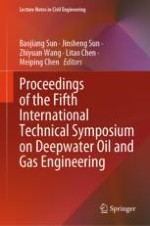2024 | OriginalPaper | Buchkapitel
Study on Stability of Horizontal Wellbore Drilled in Marine Natural Gas Hydrate Reservoir
verfasst von : Xiansi Wang, Zhiyuan Wang, Zhenggang Gong, Weiqi Fu, Peng Liu, Jianbo Zhang
Erschienen in: Proceedings of the Fifth International Technical Symposium on Deepwater Oil and Gas Engineering
Verlag: Springer Nature Singapore
Aktivieren Sie unsere intelligente Suche, um passende Fachinhalte oder Patente zu finden.
Wählen Sie Textabschnitte aus um mit Künstlicher Intelligenz passenden Patente zu finden. powered by
Markieren Sie Textabschnitte, um KI-gestützt weitere passende Inhalte zu finden. powered by
